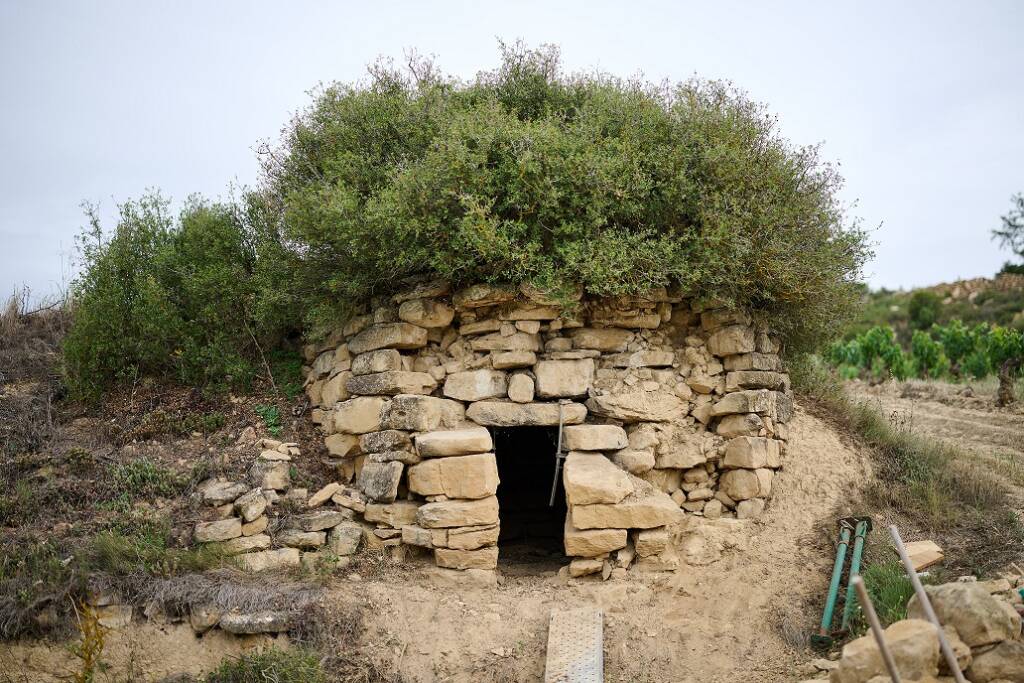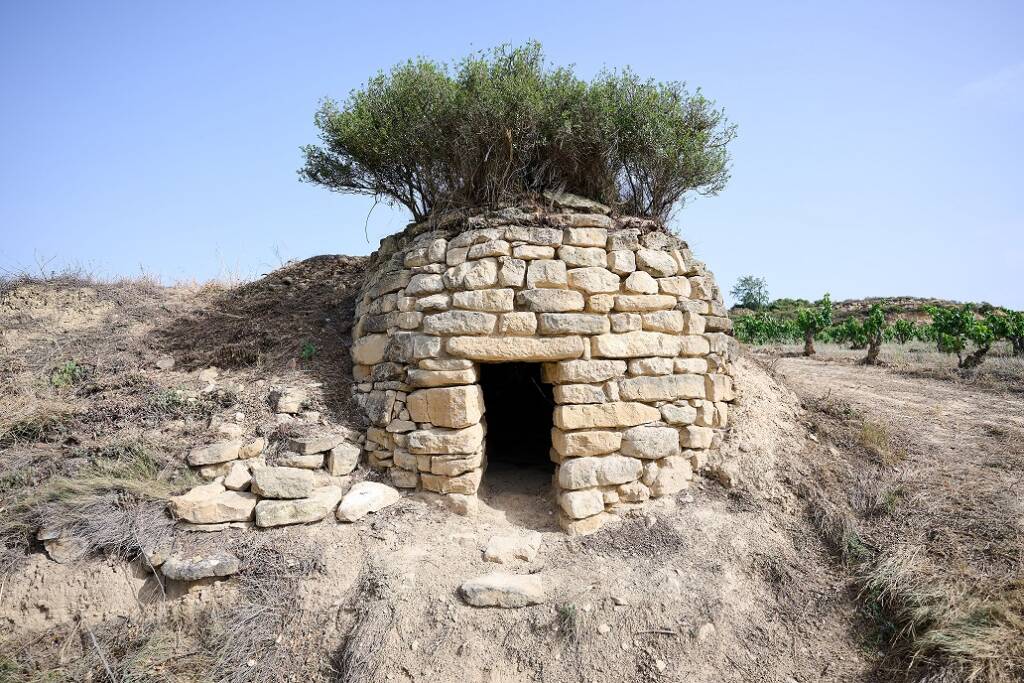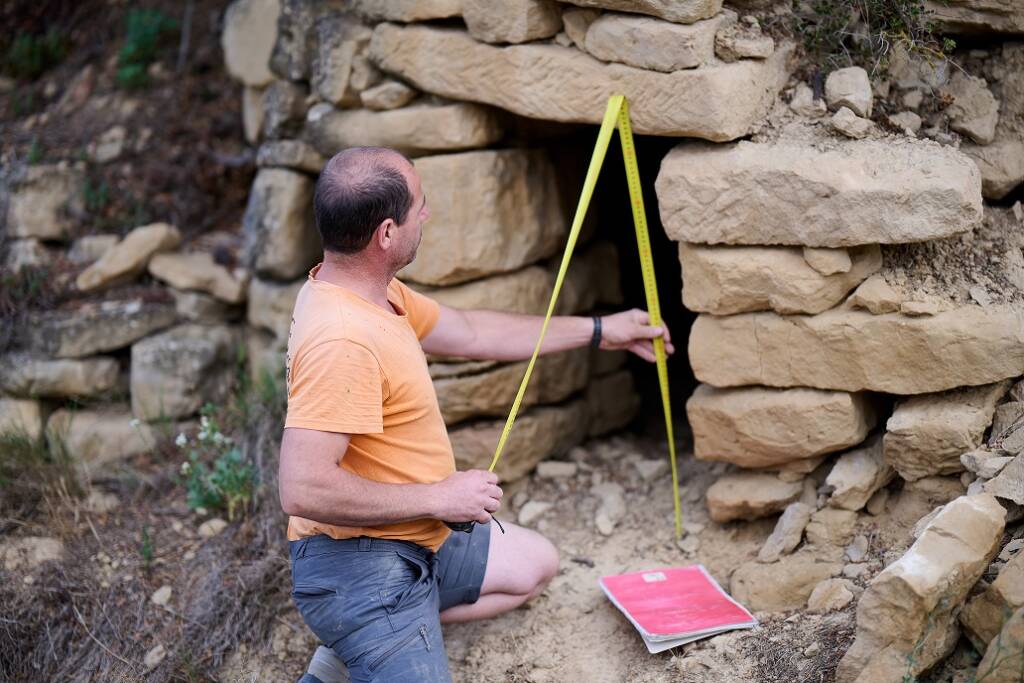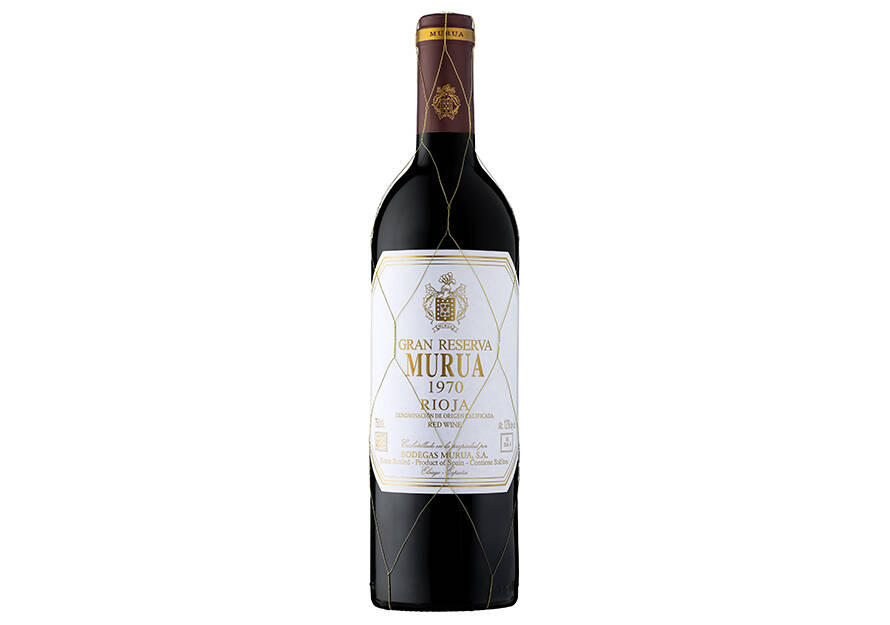Murua Wineries, committed to the recovery of cultural heritage, has just completed the restoration work on a 19th-century stone hut (chozo) located on the Vallobera estate, within the boundaries of the winery.
The project, supervised by an archaeologist in accordance with the criteria set by the Historical and Architectural Heritage Service of Álava, has restored the hut to its original state after it had been damaged by the roots of a tree growing on top of it, which had caused several stones in the façade to come loose.
This chozo or ”guardaviñas” is located within the boundaries of the Monumental Complex “Cultural Landscape of Wine and Vineyards of Rioja Alavesa” (Álava). In addition to this chozo, Murua Wineries has two other similar structures, also situated on the winery’s land, specifically in the plots “La Pared” and “Cuatro Encinas.”
“The purpose of the restoration is to protect the archaeological heritage and allow the wine tourists who visit us to discover these small stone structures and delve into their history,” adds Mathieu Barrault, winemaker at Murua Wineries.


The restoration work is part of the cultural and historical heritage recovery projects that Masaveu Wineries has been carrying out on the archaeological remains located near its wineries. These efforts have, for example, also made it possible to preserve the prehistoric petroglyphs (rock carvings) found at Fillaboa Wineries, on the Finca Coto de Prado plot. The site comprises seven groups of carvings, all of which are in excellent condition.
The budget for the restoration of the hut was €6,200, co-financed by Murua Wineries and the Government of Álava.It is a semi-buried hut. Due to the fracture of one of the supporting stones at the entrance, the front wall began to give way, further weakened by the action of rain. The tree, which has grown through the stones over time, has actually helped keep the structure standing despite the damage to its foundations. ” explains the archaeologist Unai Arruza.
Farmers’ shelter
The chozos are small stone constructions used by farmers as shelters to tend and watch over their crops. They are also known as “guardaviñas” (vineyard shelters) because they were often used by the vineyard watchman, who slept inside to ensure that livestock did not damage the vines. They also served as shelters, storage spaces, and more. Although there are several types, most are simple circular structures that narrow toward the top and are built without the use of any mortar—a technique known as dry stone construction.
Their significance goes beyond architectural or artistic value, as they stand as witnesses to the fundamental role that viticulture has played in Rioja Alavesa since time immemorial.
They constitute a very characteristic element of the landscape of this land, where, according to the records of the Historical and Architectural Heritage of Álava, there are currently 880 chozos registered and documented. “There are hardly any chozos in other areas of the Rioja D.O. In this region, Rioja Alavesa, together with Sonsierra, lies the highest concentration of this type of construction, which stand as the best testimony to the area’s ancestral vineyards. ” argues Barrault.


About Masaveu Wineries
The Masaveu family began investing in the winemaking sector in 1974, when they acquired Bodegas Murua, but the family’s vineyard plantings date back to the mid-19th century, specifically in Castellar del Vallés, where the family originates and where Federico Masaveu Rivell started the steps that a century later would be continued by his descendants.
Since then, Masaveu Wineries has grown steadily with a strong commitment to quality in the production of its wines across different DOs, embracing an ecological philosophy and utmost respect for the land, where it owns its own vineyards, allowing them to convey the unique personality of each terroir in every bottle. In this way, all of Masaveu Wineries projects across different parts and regions of the country come together under a common denominator: Murua (DOCa. Rioja), Fillaboa (DO. Rías Baixas), Pagos de Araiz (DO. Navarra), Leda (Vino de la Tierra de Castilla y León), and Valverán (Asturias).

